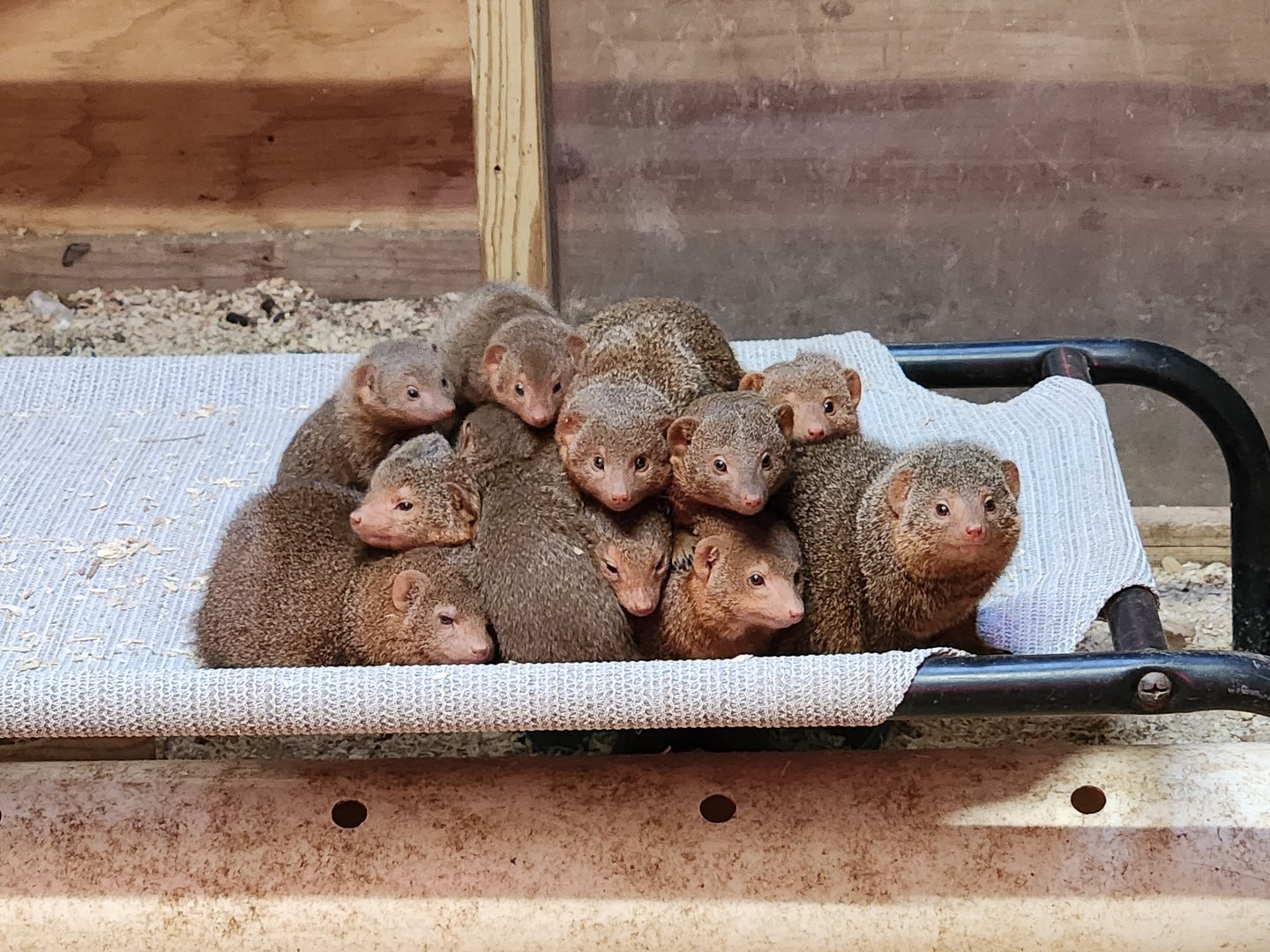- Understanding the behavioral adaptations of dwarf mongooses to cold weather
- The social structures and family dynamics within a mongoose community
- The importance of zoos in educating the public about wildlife and conservation
- How zoos adapt to seasonal changes to provide for both animal welfare and visitor experiences
- The role of dwarf mongooses and similar species in broader wildlife conservation efforts
As the cold weather sets in, we find ourselves yearning for warmth and comfort much like the dwarf mongoose. This species, native to sub-Saharan Africa, has developed fascinating behavioral adaptations to stay cozy during chilly periods. Their intuitive response to cold is a perfect example of nature’s ingenuity.
Dwarf mongooses engage in what has endearingly been dubbed the "cuddle puddle." This communal sleeping arrangement allows the mongooses to share body heat, effectively creating a micro-environment that wards off the chill. This behavior not only ensures their survival in the wild, where temperatures can drop significantly, but also underscores the significance of social bonds within their groups. Each mongoose contributes to, and benefits from, this collective warmth, demonstrating their natural reliance on family structures for survival.
Social structures play an essential role in the dynamics of mongoose communities. These animals live in tight-knit family units that might include up to 20 individuals. Within these communities, there’s a clear hierarchy, typically led by a dominant male and female pair. These leaders are responsible for coordinating activities like foraging and territory defense, which are crucial for their survival and prosperity. The social cohesion seen in mongoose groups is not just about maintaining warmth; it’s about fostering a supportive environment where cooperative behaviors are vital. Young mongooses are nurtured not only by their parents but by other adults in the group in a practice known as alloparenting. This cooperation enhances the group’s resilience, ensuring that young mongooses grow in a stable and secure environment.
Zoos, as custodians of animal welfare, serve an invaluable function in educating the public about wildlife and conservation. They provide a rare opportunity for people of all ages to observe and learn about species like the dwarf mongoose, which may otherwise go unseen and underappreciated. These institutions play a pivotal role in protecting species that face threats in the wild such as habitat loss and climate change. By showcasing the behaviors and dynamics of animals that adapt ingeniously to environmental challenges, zoos ignite a spark of curiosity and respect for biodiversity among visitors. These educational experiences are designed to foster a deeper understanding of our interconnectedness with other living beings and the planet we share.
Moreover, zoos must adapt to seasonal changes to maintain an optimal balance between animal welfare and visitor satisfaction. In the winter months, special attention is given to the needs of species not accustomed to cold climates. Enclosures and exhibits are designed to replicate natural habitats as closely as possible, with added features such as heated indoor spaces and shelter from inclement weather. These adaptations are crucial in ensuring that animals can thrive no matter the season. Simultaneously, zoos remain accessible to the public, offering enriching experiences even during the colder months. This is crucial for visitors who seek to learn about animals in a setting that accurately reflects the seasonal conditions many species would encounter in the wild.
Dwarf mongooses, though small and often overlooked, play a significant role in wildlife conservation efforts. They serve as surrogate species in educational campaigns, helping highlight broader environmental issues and conservation needs. Understanding their behaviors and ecological roles provides valuable insights into ecosystem health and resilience. These animals are integral to the food web, contributing to pest control and supporting the balance of their natural habitats. Their survival is intrinsically linked to the sustainability of their environment, which underscores the importance of preserving not just individual species, but entire ecosystems. Conservationists stress the importance of preserving natural habitats and employing sustainable practices to protect both charismatic fauna and less conspicuous but equally vital species like the dwarf mongoose.
These narratives within zoological settings extend beyond the confines of the exhibits. By observing and learning about the lives of dwarf mongooses in a zoo setting, visitors can better appreciate the wild spaces outside and the complex interactions that sustain our planet’s biodiversity. It’s essential to recognize that through education and immersive experiences, zoos inspire action and stewardship for the natural world, empowering individuals to contribute to wildlife conservation efforts in their own communities.
In summary, the return of cold weather shines a spotlight on the remarkable adaptive strategies of dwarf mongooses. Through the lens of their "cuddle puddle" behavior, we gain insight into the intricate social structures and survival strategies of these fascinating creatures. Zoos bridge the gap between wild ecosystems and human understanding, bringing to light the importance of protecting species and preserving biodiversity for future generations. As we strive to be more like the dwarf mongoose in embracing community and resilience, zoos stand as vital pillars in the effort toward educating and activating global wildlife conservation.
*****
Source Description
We all want to be like these dwarf mongooses now with the return of the cold weather 🥶
The dwarf mongoose cuddle puddle is one way the species has stayed cozy during the recent winter weather. The Zoo is open all winter long, pending inclement weather.


